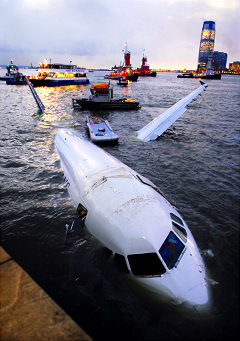 How do humans make good decisions under conditions of intense pressure? How did Capt. Chesley B. “Sully” Sullenberger III manage to stay cool, calm, and collected and safely land U.S. Airways Flight 1549 in the Hudson River after multiple bird strikes took out both his engines?
How do humans make good decisions under conditions of intense pressure? How did Capt. Chesley B. “Sully” Sullenberger III manage to stay cool, calm, and collected and safely land U.S. Airways Flight 1549 in the Hudson River after multiple bird strikes took out both his engines?
It certainly isn’t an absence of fear; courage is the ability to overcome our fears, not the lack of fear. One key to keeping fear from becoming panic is the ability to offset the visceral emotions of our amygdala with the more “rational and deliberate thought process” located in our prefrontal cortex. This is a form of metacognition, the act of thinking about thinking.
Learning the art of “deliberate calm” requires practice, practice, practice plus conscious effort. Simulator training is a vital way in which pilots hone the skills and acquire the practice that allows them to remain calm under pressure. A long time ago, I had a single engine pilot’s license, checked out on Cessna 152s and 172s. I was fortunate to have some excellent flight instructors and they drilled emergency procedures into me at a deep and intense level. On the two minor occasions when I had cause to use those skills (a stall recovery from slow flight and a go-around), I was pleasantly surprised at how quickly the reflexes, that my instructors had so ardently taught, kicked in.
Deliberate calm, the ability to stay cool and calm under pressure, is a skill that is useful in many areas of life. And the good news is that it is a learnable skill. Visualization, planning, and practice all help develop the ability to handle pressure and stress.
Closing Quote:
“The will to win is important, but the will to prepare is vital.” — Joseph Vincent Paterno, b. December 21, 1926. in Brooklyn, New York.
Note: Inspiration for this blog comes from a January 17, 2009, Los Angeles Times article by Jonah Lehrer, the author of “Proust Was a Neuroscientist” and “How We Decide.”


0 Comments